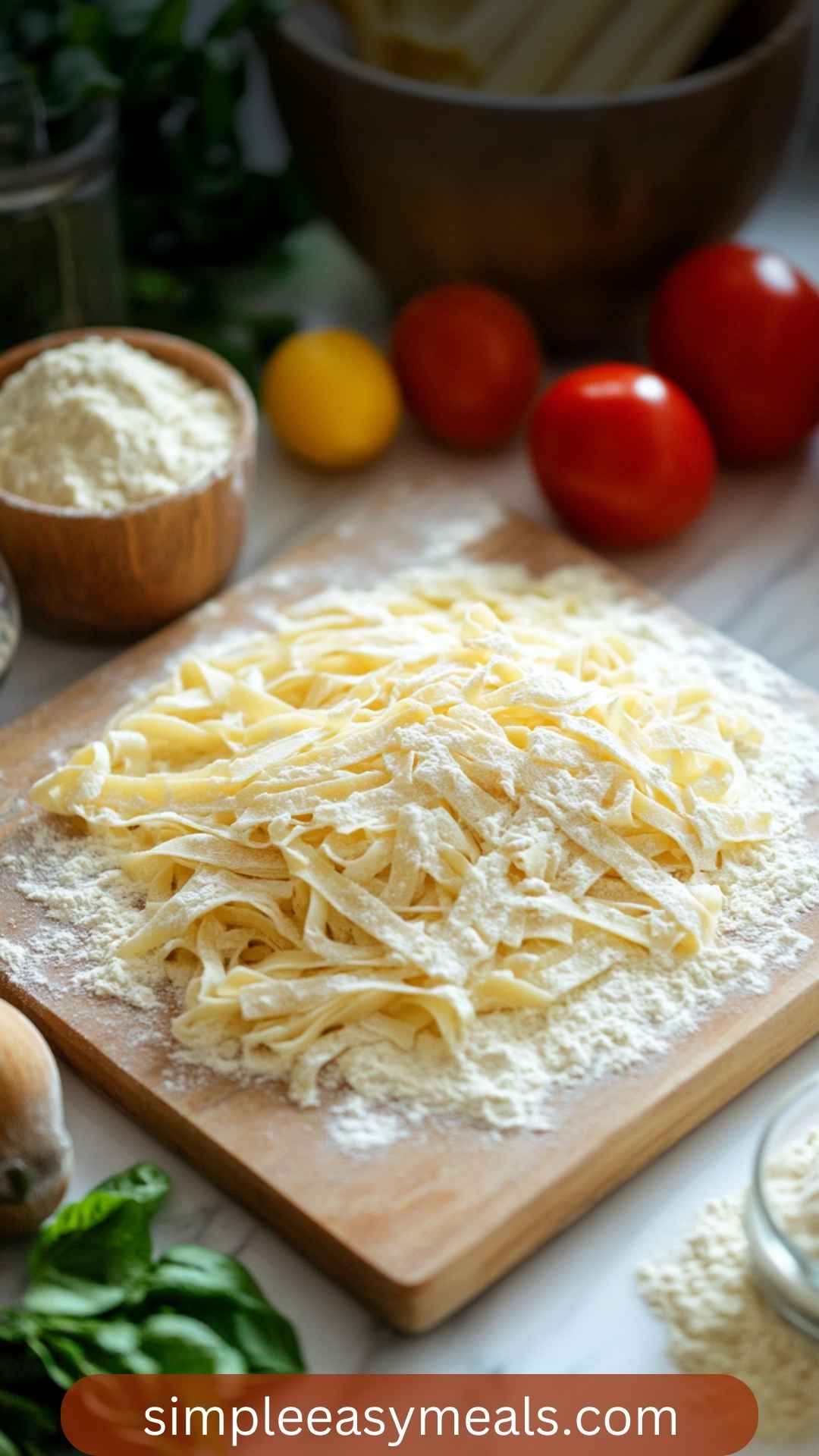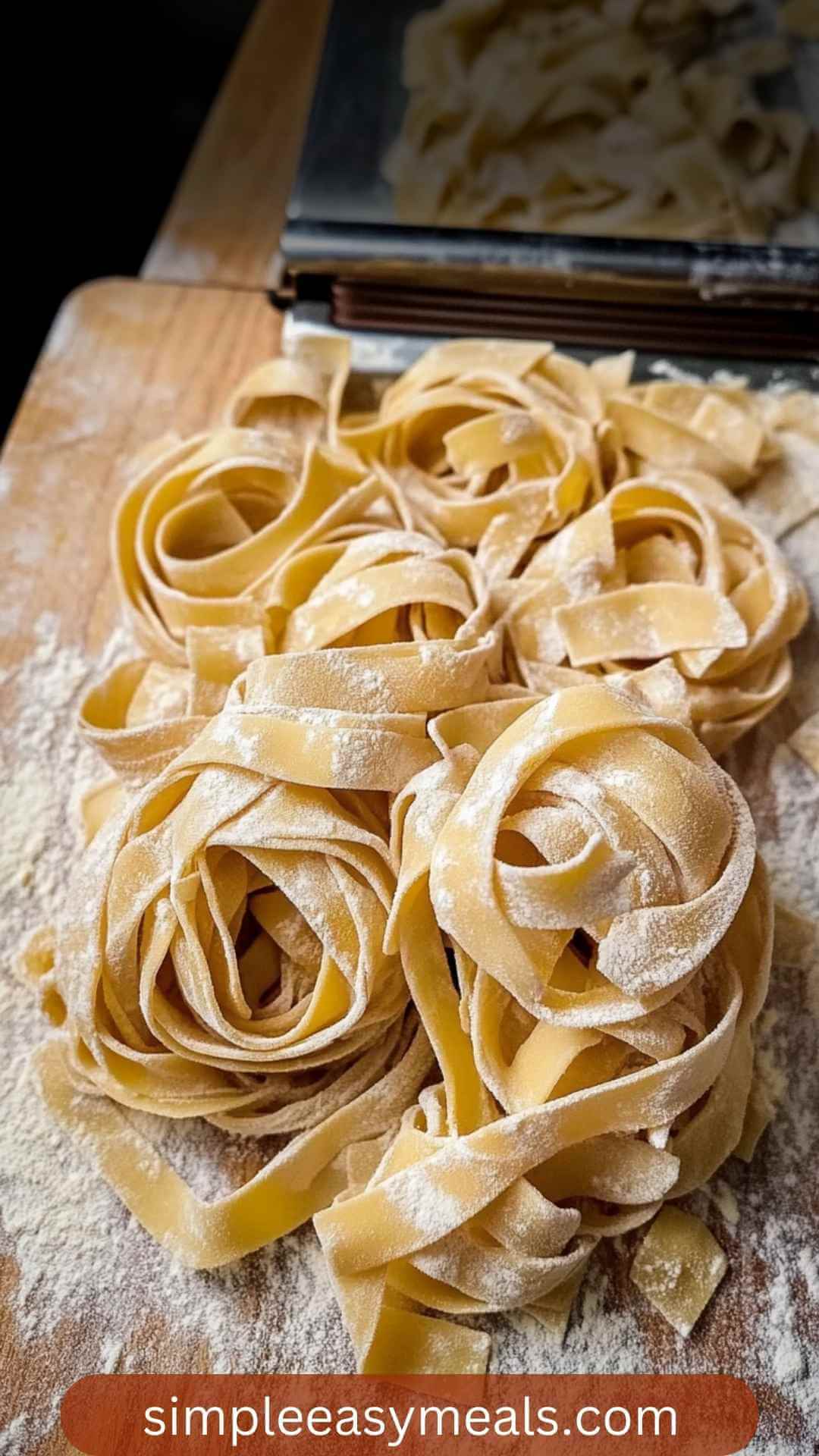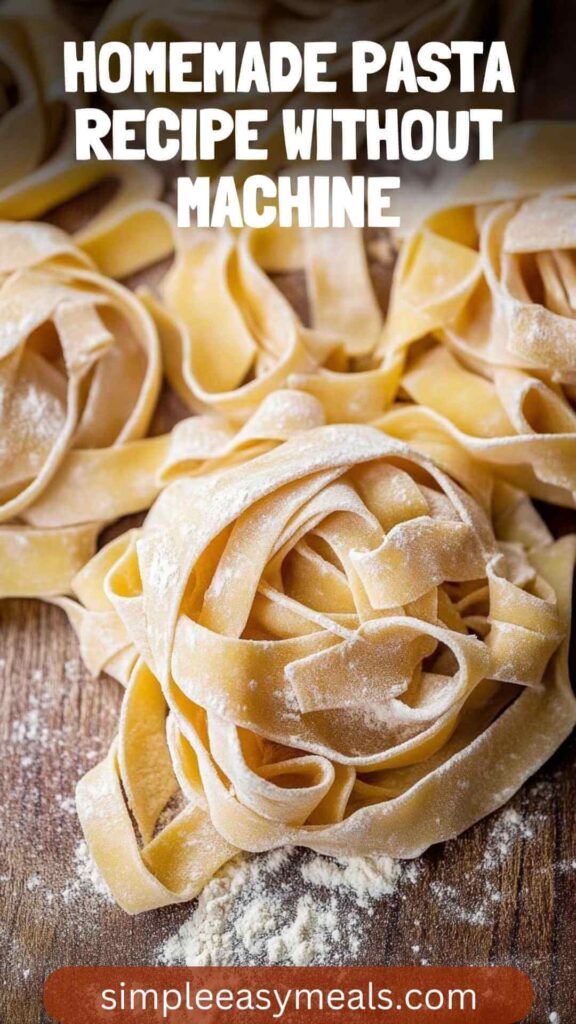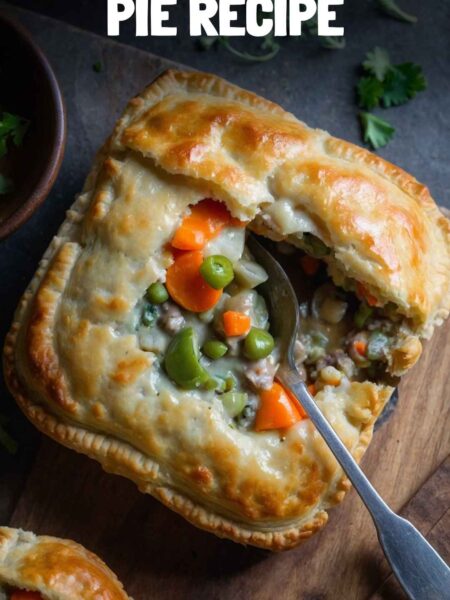Ever sat down to a steaming plate of freshly made pasta? If you haven’t, it’s time to change that. Homemade pasta is not just about the taste; it’s an experience, a celebration, and perhaps a touch of culinary magic.
Believe me, I’ve been there – mixing the flour, cracking the eggs, and feeling that dough transform under my fingertips. There’s something incredibly satisfying about creating pasta from scratch without relying on a machine.

Pairing Suggestions
Before we dive into the nitty-gritty of pasta-making, let’s talk about what you can pair with this magical creation. Think of colorful marinara sauce, rich Alfredo, or a creamy pesto.
These sauces can turn a simple plate of pasta into a feast.
Add in a side of garlic bread or a crisp Caesar salad to elevate the meal. And don’t forget a sprinkle of parmesan or a handful of fresh basil. It’s like dressing your pasta up for a night out!
What is Homemade Pasta Without Machine?
Homemade pasta without a machine is simply a delightful mixture of flour, eggs, olive oil, and salt, transformed by hand.
The beauty of this process lies in its simplicity. You don’t require fancy equipment—just your hands and a rolling pin. It’s a mix of art and science, where you feel the dough’s texture as it transforms into something delicious.
Why This Recipe Works?
1. Fresh Ingredients Create Superior Flavor
Using fresh ingredients like eggs and high-quality flour gives homemade pasta a flavor that store-bought products can’t compete with. The taste is richer, and it elevates every bite into something extraordinary.
2. Customization at Your Fingertips
You have complete control over your ingredients. Want whole grain flour? Go for it! Wish to add herbs or spices to the dough? You can! This adaptability means you can cater to your family’s tastes and dietary needs, making every meal a joyous occasion.
3. Fun Factor of Making Pasta by Hand
There’s a certain joy in rolling out dough by hand. It’s like a mini workout combined with a cooking lesson. This activity can turn into a bonding experience if you invite friends or family to join in. It’s a kitchen adventure!
4. Healthier Choice for Your Family
Homemade pasta can be healthier than commercially produced options. You choose the ingredients, which means no preservatives or mysterious additives. It’s direct, honest cooking that you can feel good about serving.
Ingredients You’ll Need To Make This Homemade Pasta Without Machine
- 4 large eggs
- 1 tablespoon of olive oil
- A pinch of sea salt
- 3 1/4 cups of all-purpose flour

How To Make These?
Step 1: Gather Your Ingredients
Start by placing the flour on a clean surface or in a large bowl. Make a well in the center. Then, add the eggs and olive oil into the well. Sprinkle a pinch of salt over everything.
Step 2: Mix It Up
Using a fork, beat the eggs gently in the center while gradually incorporating the flour from the edges of the well. Keep mixing until the dough begins to come together. You’ll notice it becomes a bit shaggy at this stage.
Step 3: Knead the Dough
Once the ingredients are mixed, it’s time to get your hands in there! Knead the dough for about 10 minutes until it’s smooth and elastic. If the dough feels too sticky, sprinkle a little extra flour as needed.
Step 4: Resting Time
Wrap the kneaded dough in plastic wrap or cover it with a clean kitchen towel. Let it rest for at least 30 minutes. This step allows the gluten to relax, making it easier to roll out.
Step 5: Roll Out the Dough
After resting, divide the dough into four pieces. Keep the pieces you’re not using covered. Begin with one piece. Flatten it slightly, then roll it out on a floured surface. Aim for a thinness that suits your preference—about 1/8 inch works well.
Step 6: Cutting Your Pasta
Once rolled out, you can use a sharp knife or a pizza cutter to slice the pasta into your desired shape: fettuccine, tagliatelle, or even lasagna sheets. Dust the cut pasta lightly with flour to keep the pieces from sticking.
Step 7: Cooking the Pasta
Bring a large pot of salted water to a boil. Toss in your fresh pasta and cook for about 2 to 4 minutes. Fresh pasta cooks quickly, so keep an eye on it! Once done, drain and toss it in your preferred sauce.
Tips
- Use Quality Flour: The type of flour can significantly affect texture. “00” flour is great, but all-purpose works just fine.
- Don’t Skip the Rest Period: Allowing the dough to rest is crucial. This helps in achieving a nice texture and keeps the dough manageable.
- Keep Dusting with Flour: While rolling and cutting, ensure to keep the dough lightly floured. This prevents sticking and makes the process smoother.
- Taste Test: Always taste a piece of pasta before serving. Adjust the cooking time based on your preference for texture.
- Experiment with Flavors: Consider adding spices or herbs into the dough for an interesting twist.
How to Store The Leftovers?
Once cooked, any leftover pasta can be stored in an airtight container in the refrigerator. It is best used within three days for optimal freshness. For longer storage, consider freezing it uncooked in a single layer on a baking sheet, then transfer to a freezer bag. This way, you can enjoy homemade pasta anytime!
Recommended Side Dishes for Homemade Pasta Without Machine
- Garlic Bread
Crispy, buttery garlic bread is a perfect companion. It adds richness and texture to your meal.
- Caprese Salad
Fresh mozzarella, tomato slices, and basil dressed in olive oil create a refreshing contrast to the pasta.
- Roasted Vegetable Medley
A colorful array of veggies roasted with olive oil and herbs provides a healthy and tasty balance.
- Caesar Salad
Crisp lettuce, crunchy croutons, and a creamy dressing make for a classic side that complements pasta beautifully.
Ingredient Substitutes
- Eggs
If you’re looking for a vegan option, replace each egg with a mix of 1 tablespoon of ground flaxseed and 2.5 tablespoons of water.
- All-Purpose Flour
You can substitute with whole wheat flour for a healthier take. Just be aware that it may alter the texture slightly.
- Olive Oil
If olive oil is missing, simply use any other neutral oil like canola or vegetable oil.
- Sea Salt
In a pinch, regular table salt works as a substitute; just use a little less, as it’s finer.

Conclusion
Homemade pasta without a machine is about embracing the hands-on process of cooking, investing time in crafting something delicious, and enjoying the fruits of your labor. This fun and straightforward approach to pasta-making can transform your meal experience forever.
Share this journey with family or friends and enjoy scrumptious results that everyone will adore. Remember, every time you make pasta, you’re not just creating a meal; you’re crafting memories.
So roll up your sleeves, gather your ingredients, and let the magic begin!
You’ll also like the following recipes!
- Simple Gnocchi Copycat Recipe
- How to Make Pappardelle Pasta with Chicken
- Best Outback Steakhouse Caesar Salad Recipe
Homemade Pasta Recipe Without Machine – Simple Easy Meals
Ever sat down to a steaming plate of freshly made pasta? If you haven’t, it’s time to change that. Homemade pasta is not just about the taste; it’s an experience, a celebration, and perhaps a touch of culinary magic.

Ingredients
Instructions
Step 1: Gather Your Ingredients
-
Start by placing the flour on a clean surface or in a large bowl. Make a well in the center. Then, add the eggs and olive oil into the well. Sprinkle a pinch of salt over everything.
Step 2: Mix It Up
-
Using a fork, beat the eggs gently in the center while gradually incorporating the flour from the edges of the well. Keep mixing until the dough begins to come together. You’ll notice it becomes a bit shaggy at this stage.
Step 3: Knead the Dough
-
Once the ingredients are mixed, it’s time to get your hands in there! Knead the dough for about 10 minutes until it’s smooth and elastic. If the dough feels too sticky, sprinkle a little extra flour as needed.
Step 4: Resting Time
-
Wrap the kneaded dough in plastic wrap or cover it with a clean kitchen towel. Let it rest for at least 30 minutes. This step allows the gluten to relax, making it easier to roll out.
Step 5: Roll Out the Dough
-
After resting, divide the dough into four pieces. Keep the pieces you’re not using covered. Begin with one piece. Flatten it slightly, then roll it out on a floured surface. Aim for a thinness that suits your preference—about 1/8 inch works well.
Step 6: Cutting Your Pasta
-
Once rolled out, you can use a sharp knife or a pizza cutter to slice the pasta into your desired shape: fettuccine, tagliatelle, or even lasagna sheets. Dust the cut pasta lightly with flour to keep the pieces from sticking.
Step 7: Cooking the Pasta
-
Bring a large pot of salted water to a boil. Toss in your fresh pasta and cook for about 2 to 4 minutes. Fresh pasta cooks quickly, so keep an eye on it! Once done, drain and toss it in your preferred sauce.
Nutrition Facts
Servings 6
- Amount Per Serving
- Calories 283kcal
- % Daily Value *
- Total Fat 3.7g6%
- Saturated Fat 1.2g6%
- Cholesterol 123mg41%
- Sodium 7mg1%
- Total Carbohydrate 52g18%
- Dietary Fiber 2g8%
- Protein 9g18%
* Percent Daily Values are based on a 2,000 calorie diet. Your daily value may be higher or lower depending on your calorie needs.
Note
- Use Quality Flour: The type of flour can significantly affect texture. “00” flour is great, but all-purpose works just fine.
- Don’t Skip the Rest Period: Allowing the dough to rest is crucial. This helps in achieving a nice texture and keeps the dough manageable.
- Keep Dusting with Flour: While rolling and cutting, ensure to keep the dough lightly floured. This prevents sticking and makes the process smoother.
- Taste Test: Always taste a piece of pasta before serving. Adjust the cooking time based on your preference for texture.
- Experiment with Flavors: Consider adding spices or herbs into the dough for an interesting twist.





